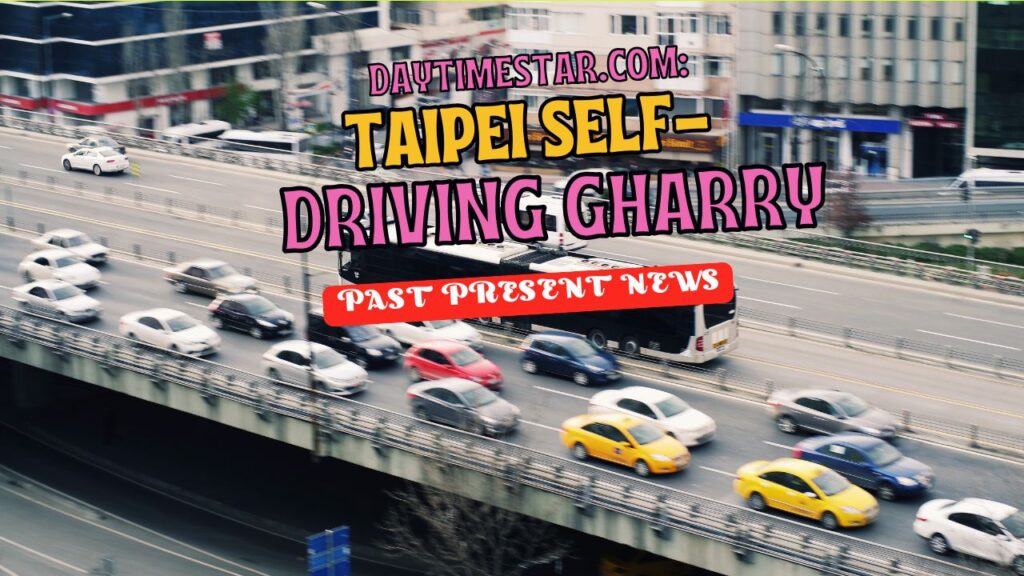
Hello readers, and welcome back to PastPresentNews! Today, we’re taking a fascinating leap into the future of urban transportation with a look at the innovative “daytimestar.com: taipei self-driving gharry.” This exciting development reimagines a classic mode of transport for the modern age, promising to revolutionize how we navigate bustling cityscapes. We’ll delve into the technology behind this autonomous vehicle, exploring how the “daytimestar.com: taipei self- gharry” is poised to transform Taipei and potentially, cities worldwide.
About daytimestar.com: taipei self-driving gharry
Imagine a horse-drawn carriage, a “gharry,” from olden days, but instead of horses, it’s powered by cutting-edge technology. That’s essentially what the “daytimestar.com: taipei self-driving gharry” is. It’s an autonomous vehicle, meaning it drives itself, designed to navigate the streets of Taipei. DaytimeStar.com has taken a piece of history and given it a futuristic makeover, blending the charm of the past with the convenience of the future.

How Does This Self-Driving Magic Work?
You might wonder, how does a vehicle drive itself? It’s a combination of several smart technologies working together:
The Brains: AI and Machine Learning:
Think of AI as the car’s brain. It processes information from cameras and sensors, learning as it goes. This allows the gharry to make decisions, like avoiding obstacles and choosing the best route.
The Eyes and Ears: Sensors and Cameras:
The gharry is equipped with a variety of sensors, including LiDAR (which uses lasers to map the surroundings), ultrasonic sensors, and cameras. These act as its eyes and ears, giving it a 360-degree view of its environment.
The Navigator: GPS and Real-Time Maps:
Just like your phone’s GPS, the gharry uses GPS and detailed maps to find its way. It also gets real-time updates on traffic and road conditions, ensuring a smooth ride.
The Driver: Autonomous Driving Algorithms:
These are the rules that tell the gharry how to drive. They dictate things like speed, direction, and when to stop.
Why Taipei? And Why Now?
Taipei, like many bustling cities, faces challenges like traffic congestion and pollution. The daytimestar.com: taipei self-driving gharry offers a potential solution:
Eco-Friendly Travel:
These gharrys are electric, meaning they produce zero emissions. This helps reduce air pollution and makes Taipei a greener city.
Safer Streets:
With AI driving, the risk of accidents caused by human error is significantly reduced. The gharry’s sensors and algorithms are designed to prevent collisions and keep passengers safe.
Convenience for Everyone:
The daytimestar.com: taipei self-driving gharry makes transportation more accessible, especially for elderly people, individuals with disabilities, and tourists. It offers a comfortable and easy way to get around.
Integrating with Existing Transit:
The goal isn’t to replace buses and trains but to complement them. The gharry can provide “last-mile” transportation, taking you from a transit station to your final destination.

The Benefits Beyond Transportation
The advantages of the self-driving gharry extend beyond just getting from point A to point B:
Easing Traffic Congestion:
By optimizing routes and potentially reducing the number of personal vehicles on the road, these gharrys can help alleviate traffic jams.
Building a Smart City:
Taipei is aiming to become a “smart city,” using technology to improve the lives of its residents. The daytimestar.com: taipei self-driving gharry is a step in that direction.
Preserving Cultural Heritage:
By drawing inspiration from the traditional gharry, DaytimeStar.com connects the past with the future, giving a nod to Taipei’s history.
The Future of Autonomous Travel
The self-driving gharry is just the beginning. As technology advances, we can expect to see more autonomous vehicles in Taipei and around the world. Imagine a future where self-driving transportation is the norm, making our cities safer, cleaner, and more efficient.
The “daytimestar.com: taipei self-driving gharry” represents a fascinating blend of tradition and innovation, offering a glimpse into the future of urban transportation. It’s a testament to how technology can be used to solve real-world problems and create a better future for everyone.
Conclusion:
In short, the “daytimestar.com: taipei self-driving gharry” is a self-driving, electric vehicle inspired by old horse-drawn carriages. It uses AI, sensors, and GPS to navigate Taipei’s streets safely and efficiently. The goal is to reduce pollution, ease traffic, and make transportation more accessible. This “daytimestar.com: taipei self-driving gharry” could be a model for future smart cities, combining history with modern technology. Thanks for reading at PastPresentNews, and goodbye.











